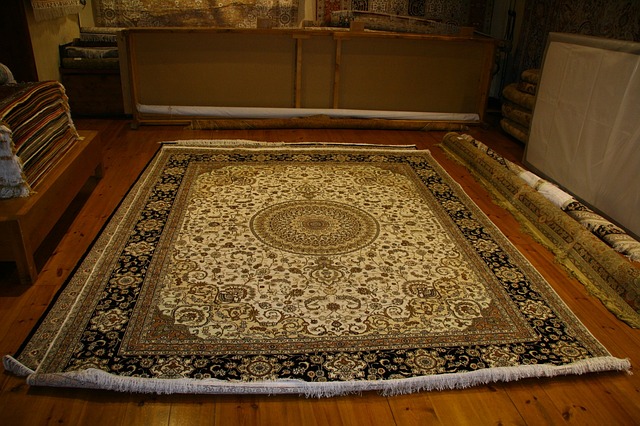AS WITH ANY COLLECTIBLE, MAKE SURE YOUR RUG IS CATALOGED ALONG WITH THE REST OF YOUR PHYSICAL ASSETS.

For most people, a rug is a way to spruce up a room, something they walk over to get from point A to point B; for others, they are a way of bringing history into the home and an excellent investment as well. Just ask the bidder at a 2013 auction at Sotheby’s who paid over thirty-three million for the “Clarke Sickle-Leaf,” a stunning example of Islamic artwork from the Safavid dynasty. (The price stunned even the experts, who had expected it to fetch “only” ten or fifteen million.) While you may not be willing to plunk down that kind of money, an authentic Persian or oriental will come with a hefty price tag. Here are a few things you should know before taking that step.
As with any collectible, you want to make sure your rug is the genuine article. First, what country does it come from? According to experts, origin is one of the most important factors in determining value. Persians, with their muted, earthy tones and central “medallion” in the design, have historically commanded the highest prices in the world. While oriental rugs, which often have brighter colors and a floral pattern, can be great investments as well, those made in Iran remain the gold standard. Since their defining features are usually apparent to the casual eye, many potential buyers assume they don’t help in distinguishing the two; however, without a professional they may be missing the most important criterion of all – the craftsmanship.
Genuine Persian and oriental rugs are made of silk and wool; they are also hand-knotted, which is incredible considering the uniformity of the design and the number of knots – often a hundred and fifty or more per square foot. The general rule of thumb is that the higher the knot count, the more valuable the rug. The type of knot is also an important indicator of origin – Iranian craftsmen use Senneh knots, which are asymmetrical, while those in other countries, including Asia, use symmetrical Ghiordes knots. To make things more complicated, older rugs from these regions can be harder to tell apart.
Unless you are purchasing a brand new rug, you also want to make sure it comes with a provenance that establishes its history, including its age, condition, the names of previous owners, and perhaps even famous estates whose floors it once graced. This is critical when you are considering buying a Persian rug, due to economic sanctions the US has had against Iran since 1987. If you’re buying a genuine Persian rug created after that year, it is an illegal purchase. In order to protect yourself and your investment, you want to have documentation outlining a clear chain of custody.
Once you’ve established authenticity and purchased your rug, the next step is making sure you engage in regular, proper maintenance. This can be easy to forget about when it comes to rugs, especially if you’ve never made this type of investment before. First, they’re utilitarian as well as decorative so maybe less likely to be considered works of art; second, the patterns and colors may hide normal wear and tear. In order to retain their value, such rugs must be cleaned the same way they are crafted – by hand – otherwise the structure of those precious knots might be compromised. There are also ways to protect it in between cleanings, such as controlling foot traffic, which can be done by moving the furniture to redirect people and pets, and keeping it out of direct sunlight. It’s also advisable to rotate the rug regularly to keep any fading even. Vacuuming should be done once a week, using a high-quality vacuum and moving with the grain – no scented chemicals allowed.
To sum up, Persian or oriental rugs are a part of your net worth and should be treated as such. This means cataloguing them along with the rest of your physical assets and building relationships with trusted professionals who can advise you on buying, selling, and maintaining them. Also, you might consider utilizing digital tools, including all-in-one solutions that allow you to store information on them, assign tasks to yourself or your staff, and schedule repairs. If you take the steps to authenticate and properly care for your rugs, they can be a valuable part of your complete portfolio and a way of passing wealth to your heirs.
